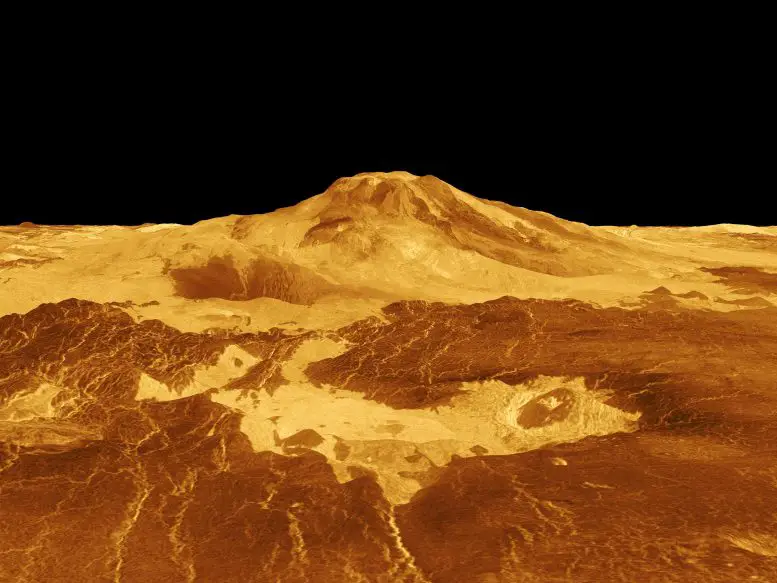Analyzing radar images from the Magellan spacecraft, researchers discovered a shifting volcanic vent on Venus, providing new evidence of active volcanism on the planet. Researchers have found evidence of what they interpret as active volcanism on the surface of Venus, according to a new analysis of radar images from the Magellan spacecraft. The images show a shape-shifting hole in Venus, which they believe indicates ongoing volcanic activity.
Many volcanoes have been discovered on the surface of Venus, but evidence of recent volcanic activity on the planet is lacking. As a result, it was unknown whether the prominent volcanic features on Venus’ geologically young surface were the product of ongoing active volcanism or the remnants of ancient volcanic activity that has since ceased.
Although no volcanic eruptions have been observed on Venus, some previous research has shown that volcanic activity can occur in different regions of the planet’s surface. However, geodynamic models of the planet give different estimates of the current level of volcanism on Venus.
Robert Herrick and Scott Hensley analyzed radar images of the Venusian surface taken by the Magellan spacecraft between 1990 and 1992 and looked for evidence of volcanic activity on Venus. During his mission, Magellan used radar to image the surface of Venus from different orbits and then observed some locations two or three times over the course of two years, including areas identified as potential sites for volcanic activity.
Because the data were not amenable to automated methods, Herrick and Hensley manually searched full-resolution radar images of these areas for changes in geological features that occurred between Magellan radar image cycles.
The authors identified a volcanic blowhole that is part of the larger Maat Mons volcanic system that appears to grow in size and change shape between two Magellan radar images taken eight months apart. Changes in the adjacent surface may have been caused by lava flow flowing out of the vent. Herrick and Hensley interpret the observed changes as an indication of ongoing volcanic activity on Venus.













